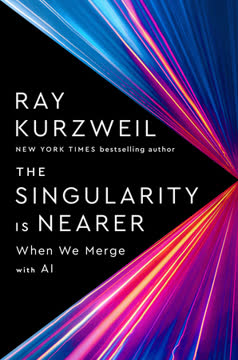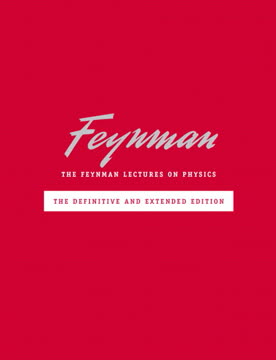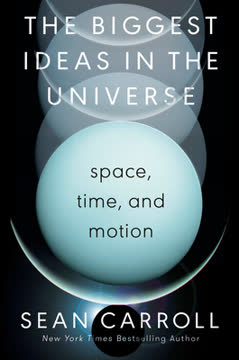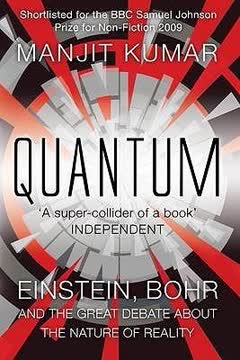Key Takeaways
1. Faraday's Early Life Shaped His Scientific Approach
I could trust a fact but always cross-examined an assertion.
Humble Beginnings. Michael Faraday's origins were far from the halls of academia. Born into a poor family in London, his early life was marked by limited formal education and an apprenticeship as a bookbinder. This hands-on experience, however, instilled in him a deep appreciation for careful observation and experimental rigor.
Self-Improvement. Driven by a thirst for knowledge, Faraday embarked on a program of self-education, devouring books on science and philosophy. He joined the City Philosophical Society, attending lectures and engaging in lively discussions with fellow enthusiasts. This dedication to self-improvement laid the foundation for his future scientific endeavors.
Skepticism and Experimentation. Faraday's early experiences instilled in him a healthy skepticism towards established theories. He learned to trust only what he could verify through his own experiments, a principle that would guide his scientific work throughout his life. This approach, combined with his boundless curiosity and imagination, set him apart from many of his contemporaries.
2. Davy's Mentorship and Europe Broadened Faraday's Horizons
Some people say I ought not accept the prize; and there have been foolish paragraphs in the papers to that effect; but if two countries or governments are at war, the men of science are not.
Davy's Influence. Faraday's life took a dramatic turn when he secured a position as an assistant to Sir Humphry Davy at the Royal Institution. Davy, a renowned scientist and charismatic lecturer, became Faraday's mentor, providing him with invaluable training and opportunities. This mentorship exposed Faraday to the world of scientific research and ignited his passion for discovery.
The Grand Tour. As Davy's assistant, Faraday accompanied him on a tour of Europe, visiting leading scientific centers and meeting prominent scientists. This experience broadened his horizons, exposing him to new ideas and perspectives. He also learned the social graces expected of a gentleman, though he never fully embraced the trappings of high society.
Enduring Humiliation. The tour was not without its challenges. Faraday faced social prejudice due to his humble background, particularly from Davy's wife. Despite these indignities, he persevered, using the experience to further refine his character and solidify his commitment to scientific pursuits.
3. Oersted's Discovery Sparks Faraday's Quest for Electromagnetic Connection
The discovery of these bodies contradicts many parts of Gay-Lussac’s paper on iodine, which has been much vaunted in these parts.
A New Force. The scientific world was electrified by Hans Christian Oersted's discovery that an electric current could deflect a compass needle. This groundbreaking observation revealed a previously unsuspected connection between electricity and magnetism, challenging existing scientific paradigms.
Faraday's Fascination. Oersted's discovery ignited Faraday's curiosity and set him on a path to explore the relationship between electricity and magnetism. He meticulously repeated Oersted's experiments, seeking to understand the underlying principles at play. This marked the beginning of Faraday's lifelong dedication to unraveling the mysteries of electromagnetism.
Ampère's Influence. While grappling with Oersted's findings, Faraday also studied the work of André-Marie Ampère, who had developed a mathematical theory of electromagnetism based on the concept of action at a distance. Although Faraday admired Ampère's work, he began to develop his own ideas, which emphasized the importance of the space surrounding electric currents and magnets.
4. Faraday's Experimental Genius Leads to the Electric Motor and Dynamo
Very satisfactory, but make a more sensible apparatus.
Rotary Motion. Driven by his belief in the interconnectedness of electricity and magnetism, Faraday sought to create continuous rotary motion using these forces. After much experimentation, he succeeded in constructing a device that demonstrated the principle of the electric motor. This invention marked a significant step towards harnessing electricity for practical applications.
Electromagnetic Induction. Faraday's quest to generate electricity from magnetism culminated in his discovery of electromagnetic induction. He found that moving a magnet near a wire could induce an electric current in the wire. This groundbreaking discovery laid the foundation for the development of the dynamo, a device that converts mechanical energy into electrical energy.
Transformative Discoveries. Faraday's inventions of the electric motor and dynamo were not merely isolated achievements. They represented a fundamental shift in our understanding of the relationship between electricity and magnetism, paving the way for countless technological innovations that would transform society.
5. Lines of Force: A Revolutionary Concept Challenging Newtonian Physics
By magnetic curves, I mean the lines of magnetic forces, however modified by the juxtaposition of poles, which would be depicted by iron filings.
Challenging Newtonian Physics. Faraday's concept of lines of force represented a radical departure from the prevailing Newtonian view of the universe. Newton's theory emphasized forces acting at a distance along straight lines, while Faraday proposed that forces were transmitted through space along curved lines. This new perspective challenged the established scientific order.
Visualizing the Invisible. Faraday's lines of force provided a way to visualize the invisible forces surrounding magnets and electric currents. By sprinkling iron filings on a piece of paper held over a magnet, he revealed the patterns of these forces, making them tangible and accessible to human understanding. This visualization technique became a powerful tool for scientific exploration.
The Field Concept. Faraday's lines of force laid the groundwork for the concept of the electromagnetic field, a region of space permeated by electric and magnetic forces. This concept would later be formalized by James Clerk Maxwell, revolutionizing our understanding of the physical world.
6. Electrochemistry: Unveiling Electricity's Role in Chemical Reactions
The equivalent weights of bodies are simply those quantities of them which contain equal quantities of electricity, or have naturally equal electric powers; it being the ELECTRICITY which determines the equivalent number, because it determines the combining force.
Decomposition of Compounds. Faraday's experiments in electrochemistry revealed the intimate connection between electricity and chemical reactions. He found that passing an electric current through a solution could decompose chemical compounds, separating them into their constituent elements. This process, known as electrolysis, provided a new tool for investigating the structure of matter.
Laws of Electrolysis. Through meticulous experimentation, Faraday established the fundamental laws of electrolysis. These laws quantified the relationship between the amount of electricity passed through a solution and the amount of chemical change that occurred. These laws provided crucial insights into the nature of chemical bonding.
Agnosticism. Faraday’s agnostic views on atoms and electricity allowed him to make discoveries without being tied to a particular theory. He was able to see the patterns and relationships in his data without being biased by preconceived notions.
7. Diamagnetism: Uncovering Hidden Magnetic Properties of Matter
If a man could be suspended with sufficient delicacy…and placed in the magnetic field, he would point equatorially, for all the substances of which he is formed, including the blood, possess this property.
Universal Magnetism. Faraday's discovery of diamagnetism revealed that all substances, not just iron and other magnetic materials, possess magnetic properties. He found that diamagnetic substances were repelled by magnetic fields, aligning themselves perpendicular to the lines of force. This discovery expanded our understanding of magnetism and its influence on the physical world.
Magnetic Field. Faraday introduced the term "magnetic field" to describe the region of space surrounding a magnet or electric current in which magnetic forces are exerted. This concept emphasized the importance of the space surrounding objects, rather than just the objects themselves, in understanding magnetic phenomena.
Challenging Established Theories. Faraday's discovery of diamagnetism challenged existing theories of magnetism, which focused primarily on the properties of iron and other ferromagnetic materials. His findings forced scientists to reconsider their understanding of the fundamental nature of magnetism.
8. Maxwell's Mathematical Genius Translates Faraday's Vision
I am naturally sceptical in the matter of theories and therefore you must not be angry with me for not admitting the one you have advanced immediately.
Bridging the Gap. James Clerk Maxwell, a brilliant Scottish physicist, recognized the importance of Faraday's ideas but also saw the need to express them in mathematical form. Maxwell embarked on a project to translate Faraday's concepts into the language of mathematics, creating a unified theory of electromagnetism. This was a monumental task, requiring both mathematical skill and a deep understanding of Faraday's experimental work.
Mathematical Framework. Maxwell's mathematical framework provided a rigorous and precise way to describe electromagnetic phenomena. His equations captured the relationships between electric and magnetic fields, as well as their interactions with matter. This framework laid the foundation for countless technological innovations.
Lines of Force. Maxwell's work gave mathematical form to Faraday's concept of lines of force, transforming them from a qualitative description into a quantitative tool. This allowed scientists to calculate the strength and direction of electromagnetic forces in any given situation.
9. Maxwell's Equations: Unifying Electricity, Magnetism, and Light
We can scarcely avoid the inference that light consists in the transverse undulations of the same medium which is the cause of electrical and magnetic phenomena.
A Unified Theory. Maxwell's greatest achievement was the unification of electricity, magnetism, and light into a single, coherent theory. His equations demonstrated that these seemingly disparate phenomena were all manifestations of the same underlying force: the electromagnetic force. This unification was a triumph of scientific reasoning.
Electromagnetic Waves. Maxwell's equations predicted the existence of electromagnetic waves, disturbances that propagate through space at the speed of light. This prediction was later confirmed by Heinrich Hertz, providing strong evidence for the validity of Maxwell's theory. The discovery of electromagnetic waves opened the door to countless technological applications, including radio, television, and wireless communication.
Revolutionary Impact. Maxwell's theory of electromagnetism revolutionized our understanding of the physical world. It changed our way of life by bringing us radio, television, radar, satellite navigation, and mobile phones; inspired Einstein’s special theory of relativity; and introduced the idea of field equations, which became the standard form used by today’s physicists to model what goes on in the vastness of space and inside atoms.
10. The Maxwellians: Carrying the Torch of Electromagnetic Theory
It is not often, even in this great home of thought and knowledge, that so bright a light is extinguished as that which is now mourned by many illustrious mourners, here chiefly, but also far beyond this place.
Building on Maxwell's Legacy. Despite the brilliance of Maxwell's theory, it was not immediately embraced by the scientific community. A group of dedicated scientists, known as the Maxwellians, took it upon themselves to champion and develop his ideas. These individuals, including Oliver Heaviside, George Francis Fitzgerald, and Heinrich Hertz, played a crucial role in establishing the theory as a cornerstone of modern physics.
Simplifying the Equations. Oliver Heaviside simplified Maxwell's equations, making them more accessible and easier to use. He also developed new mathematical tools, such as vector analysis, that proved invaluable for studying electromagnetic phenomena. Heaviside’s work was essential for the practical application of Maxwell’s theory.
Experimental Verification. Heinrich Hertz provided the experimental evidence needed to validate Maxwell's theory. His experiments demonstrated the existence of electromagnetic waves and confirmed their properties, silencing the remaining skeptics. Hertz’s work was the final piece of the puzzle, solidifying Maxwell’s theory as a fundamental law of nature.
Last updated:
FAQ
What is Faraday, Maxwell, and the Electromagnetic Field by Nancy Forbes about?
- Dual biography and science: The book tells the intertwined stories of Michael Faraday and James Clerk Maxwell, two pivotal 19th-century scientists who developed the concept of the electromagnetic field.
- Scientific revolution focus: It explains how their discoveries transformed physics, unifying electricity, magnetism, and light, and laying the groundwork for modern technology.
- Contextual narrative: The book situates their work within the broader scientific, social, and personal contexts of their times, highlighting both their experiments and the evolution of electromagnetic theory.
Why should I read Faraday, Maxwell, and the Electromagnetic Field by Nancy Forbes?
- Accessible science history: The book makes complex physics understandable through clear explanations and engaging storytelling, ideal for readers interested in the history of science.
- Humanizing great scientists: It reveals the personalities, struggles, and relationships of Faraday and Maxwell, making their scientific achievements relatable and inspiring.
- Insight into scientific method: The narrative highlights the interplay between experiment and theory, showing how foundational scientific ideas develop and change the world.
What are the key takeaways from Faraday, Maxwell, and the Electromagnetic Field by Nancy Forbes?
- Revolution in physics: Faraday and Maxwell’s work replaced Newtonian action-at-a-distance with the concept of fields, fundamentally changing our understanding of physical reality.
- Foundation for technology: Their discoveries underpin electric power, motors, radio, television, and much of modern technology.
- Inspiration from perseverance: The book illustrates how determination, curiosity, and collaboration can overcome social and intellectual barriers in science.
Who were Michael Faraday and James Clerk Maxwell, and what were their main contributions according to Nancy Forbes?
- Michael Faraday: A self-taught experimentalist who discovered electromagnetic induction, the electric motor principle, and introduced the concept of lines of force.
- James Clerk Maxwell: A mathematically gifted physicist who translated Faraday’s ideas into mathematical form, creating Maxwell’s equations and predicting electromagnetic waves.
- Joint legacy: Together, they established the electromagnetic field concept, which became the foundation for much of modern physics and technology.
How did Michael Faraday’s background and approach shape his scientific discoveries, as described by Nancy Forbes?
- Autodidact and observer: Faraday’s lack of formal education led him to rely on meticulous experimentation and imagination rather than advanced mathematics.
- Emphasis on scientific method: He was influenced by Isaac Watts’s The Improvement of the Mind, focusing on precise language, careful observation, and skepticism of unproven theories.
- Ethical and practical: Faraday’s humble origins and Sandemanian faith instilled discipline and a focus on experimental proof over speculation.
What were Michael Faraday’s key discoveries in electromagnetism highlighted in Faraday, Maxwell, and the Electromagnetic Field?
- Electric motor principle: Faraday discovered that a current-carrying wire near a magnet experiences a force, leading to the invention of the electric motor.
- Electromagnetic induction: He found that changing magnetic fields induce electric currents, the principle behind generators and transformers.
- Lines of force: Faraday introduced the concept of magnetic lines of force and the idea of an electrotonic state, foundational to field theory.
How did James Clerk Maxwell build upon Faraday’s ideas to revolutionize physics, according to Nancy Forbes?
- Mathematical translation: Maxwell expressed Faraday’s qualitative concepts in precise mathematical form, resulting in Maxwell’s equations.
- Field theory development: He used analogies like fluid flow to model electric and magnetic fields, making Faraday’s ideas mathematically tractable.
- Prediction of electromagnetic waves: Maxwell’s theory predicted that electromagnetic waves travel at the speed of light, uniting optics with electromagnetism.
What is the electromagnetic field, and how did Faraday and Maxwell develop this concept in Nancy Forbes’s book?
- Faraday’s lines of force: Faraday introduced the idea of lines of magnetic force as real entities in space, challenging Newtonian action-at-a-distance.
- Maxwell’s equations: Maxwell formulated these ideas into a set of equations describing how electric and magnetic fields propagate and interact.
- Unified theory: Their work showed that electricity, magnetism, and light are all manifestations of the same electromagnetic field.
What is the significance of Maxwell’s displacement current and the prediction of electromagnetic waves in Faraday, Maxwell, and the Electromagnetic Field?
- Displacement current concept: Maxwell introduced the idea of displacement current, completing the symmetry of electromagnetic theory and allowing for changing electric fields in insulators and vacuum.
- Electromagnetic wave prediction: This led to the prediction that changing electric and magnetic fields propagate as waves at the speed of light.
- Experimental confirmation: Heinrich Hertz’s experiments later confirmed the existence of electromagnetic waves, validating Maxwell’s theory.
How did Maxwell’s electromagnetic theory influence the development of relativity and modern physics, as explained by Nancy Forbes?
- Speed of light constancy: Maxwell’s equations implied a fixed speed of light, conflicting with classical mechanics and prompting new experiments.
- Lorentz-Fitzgerald contraction: To explain experimental results, concepts like length contraction and time dilation were proposed, later incorporated into Einstein’s special relativity.
- Einstein’s synthesis: Einstein used Maxwell’s theory as a foundation for special relativity, fundamentally changing our understanding of space, time, and energy.
Who were the Maxwellians, and what role did they play in advancing electromagnetic theory according to Nancy Forbes?
- Successors and popularizers: The Maxwellians, including Heaviside, Lodge, Fitzgerald, and Hertz, refined and experimentally confirmed Maxwell’s theory.
- Mathematical reformulation: Heaviside simplified Maxwell’s original equations into the four vector equations used today, making the theory more accessible.
- Experimental breakthroughs: Hertz’s experiments produced and detected electromagnetic waves, providing crucial proof of Maxwell’s predictions.
What are the best quotes from Faraday, Maxwell, and the Electromagnetic Field by Nancy Forbes, and what do they mean?
- On Faraday’s method: “Take imagination to its limits but draw no conclusions without solid experimental proof.” This highlights Faraday’s balance of creativity and rigorous evidence.
- On scientific theory: Maxwell’s metaphor, “The dimmed outlines of phenomenal things all merge into one another unless we put on the focusing glass of theory…” emphasizes the clarifying power of theory in science.
- On Faraday’s character: John Tyndall’s tribute, “Underneath his sweetness and gentleness was the heat of a volcano...he completely ruled his own spirit,” reveals Faraday’s passionate yet disciplined nature.
Review Summary
Faraday, Maxwell, and the Electromagnetic Field is highly praised for its engaging dual biography of two scientific giants. Readers appreciate the accessible explanations of complex physics concepts and the authors' ability to weave personal stories with scientific discoveries. The book is commended for its comprehensive coverage, from Faraday's experiments to Maxwell's equations, and their lasting impact on modern physics. Many reviewers found it inspiring and enlightening, noting how it sparked their interest in electromagnetism and the history of science. Some wished for more supplementary material or felt the mathematical explanations challenging.
Similar Books









Download PDF
Download EPUB
.epub digital book format is ideal for reading ebooks on phones, tablets, and e-readers.




